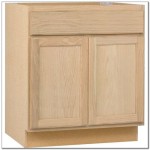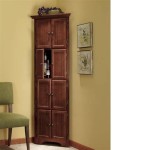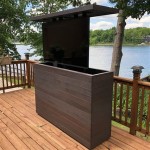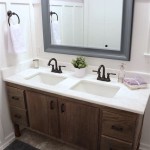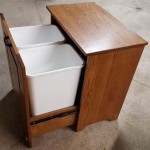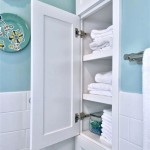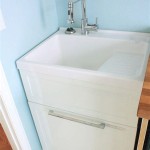How To Choose The Best Laser Level For Cabinet Installation in Kitchens
Installing kitchen cabinets requires precision. Misaligned cabinets not only look unprofessional but also lead to functional problems, such as drawers that don't close properly or countertops that don't sit flush. A laser level is an invaluable tool for achieving accurate horizontal and vertical alignment during cabinet installation, significantly simplifying the process and improving the final result. However, with a wide range of laser levels available on the market, selecting the right one for kitchen cabinet installation can be challenging. This article provides a detailed guide to help navigate the selection process, ensuring that the chosen laser level meets the specific requirements of cabinet installation projects.
A laser level projects a straight, highly visible laser beam that serves as a precise reference line. This line can be used to ensure that cabinets are installed at the same height, that they are plumb (perfectly vertical), and that they are aligned with each other. Unlike traditional spirit levels, which require constant manual adjustment and visual confirmation, a laser level provides a continuous, hands-free reference, allowing the installer to focus on the task at hand. This improves efficiency, accuracy, and overall quality of the installation.
Key Considerations Before Choosing a Laser Level
Before delving into the specific types and features of laser levels, it is crucial to establish a clear understanding of the intended use case. This involves considering the size and complexity of the kitchen renovation project, the specific tasks for which the laser level will be used, and the environmental conditions in which it will operate. All of these factors will influence the selection of the most suitable laser level.
The size of the kitchen directly correlates to the range of the laser level needed. A small galley kitchen may only require a laser level with a shorter range, while a larger, more expansive kitchen will necessitate a level with a greater range to ensure accuracy across the entire space. Furthermore, the complexity of the cabinet layout plays a significant role. Installing simple, straight-line cabinets is less demanding than installing cabinets around corners, islands, or with custom features. In such cases, features like multiple laser planes or a rotating base become essential.
Consider the specific tasks that the laser level will be used for. Primary tasks include establishing a level line for base cabinets, ensuring that upper cabinets are aligned with base cabinets, and verifying that cabinets are plumb. If the project involves installing tile backsplashes, aligning light fixtures, or other related tasks, a laser level with additional functionalities, such as a vertical laser line or a cross-line projection, may be desirable.
The work environment also plays a crucial role. Brightly lit environments can make it difficult to see the laser beam, requiring a level with a brighter laser or a laser detector. Dust and debris can also affect the accuracy and lifespan of the laser level, so a model that is sealed against these elements is preferred. Consider whether the jobsite is indoors or outdoors, as some laser levels are specifically designed for outdoor use and feature enhanced visibility in sunlight.
Types of Laser Levels Suitable for Kitchen Cabinet Installation
Several types of laser levels are suitable for kitchen cabinet installation, each with its own strengths and weaknesses. Understanding the different types allows for a more informed decision based on project requirements and budget considerations.
Line Laser Levels:
These are the most common type of laser level and are ideal for basic cabinet installation tasks. They project a single, bright laser line horizontally, vertically, or both (cross-line). Horizontal lines are used to establish level surfaces for base cabinets, while vertical lines are used to ensure cabinets are plumb. Cross-line lasers project both horizontal and vertical lines simultaneously, providing a comprehensive reference for alignment.Rotary Laser Levels:
Rotary laser levels project a laser beam that rotates 360 degrees, creating a continuous horizontal or vertical plane. This is particularly useful for larger kitchens or when installing cabinets around corners, as it eliminates the need to constantly reposition the laser level. Rotary levels often have longer ranges and are more suitable for outdoor use, but they tend to be more expensive than line laser levels.Dot Laser Levels:
These levels project a series of dots rather than a continuous line. While they are less common for cabinet installation, they can be useful for transferring points from one surface to another, such as marking the location of studs for mounting cabinets.Self-Leveling vs. Manual Leveling:
A key distinction between laser levels is whether they are self-leveling or require manual leveling. Self-leveling laser levels automatically compensate for slight deviations from level, ensuring accuracy without the need for manual adjustments. This is a significant advantage, particularly in busy or uneven job sites. Manual leveling laser levels require the user to manually adjust the level using bubble vials or other indicators. While they are generally less expensive, they require more time and attention to ensure accuracy.Key Features to Look For in a Laser Level for Cabinets
Beyond the type of laser level, several features contribute to its suitability for kitchen cabinet installation. These features affect accuracy, ease of use, and overall performance.
Accuracy:
The accuracy of a laser level is paramount. It is typically expressed as a tolerance, such as ±1/8 inch at 30 feet. For precise cabinet installation, a laser level with high accuracy is essential. Look for models with an accuracy of ±1/4 inch at 50 feet or better.Range:
The range of the laser level determines how far the laser beam can project while maintaining accuracy. A longer range is necessary for larger kitchens. Consider the longest dimension of the kitchen when selecting a laser level with an adequate range. Generally, a range of 50 feet is sufficient for most residential kitchen installations, while larger kitchens may require a range of 100 feet or more.Brightness:
The brightness of the laser beam affects its visibility, especially in brightly lit environments. A brighter laser is easier to see, improving efficiency and reducing eye strain. Laser levels are typically classified by their laser class, with Class 2 being the most common for indoor use. Higher laser classes are brighter but require additional safety precautions. A laser detector can be used to enhance the visibility of the laser beam, particularly in bright conditions.Durability:
Kitchen renovation environments can be harsh, with dust, debris, and potential impacts. A durable laser level that can withstand these conditions is essential. Look for models with a robust housing, sealed against dust and water (IP rating), and designed to withstand drops. A rubberized overmold can provide additional protection.Mounting Options:
The ability to securely mount the laser level is crucial for hands-free operation and accurate alignment. Look for models with versatile mounting options, such as a magnetic base, a clamp, or a tripod mount. A tripod is particularly useful for setting the laser level at the desired height for base or upper cabinets.Battery Life:
The battery life of the laser level affects its usability on the job site. Choose a model with a long battery life to minimize downtime for charging or replacing batteries. Some laser levels use rechargeable batteries, while others use standard AA or AAA batteries. Consider the cost and convenience of each option.Self-Leveling Range:
For self-leveling laser levels, the self-leveling range indicates the maximum angle the level can compensate for. A wider self-leveling range allows for greater flexibility in positioning the level on uneven surfaces. A self-leveling range of ±4 degrees is typically sufficient for most applications.Ease of Use:
The user interface of the laser level should be intuitive and easy to understand. Look for models with simple controls and clear markings. A remote control can be useful for adjusting the laser level from a distance, particularly for rotary laser levels.Laser Color:
Laser levels emit laser beams in different colors, typically red or green. Green lasers are generally more visible than red lasers, especially in brightly lit environments. However, green laser levels tend to be more expensive. If visibility is a major concern, a green laser level may be worth the investment.Pulse Mode:
Some laser levels feature a pulse mode that allows them to be used with a laser detector. This is particularly useful for outdoor applications or in bright indoor environments where the laser beam is difficult to see. The laser detector emits an audible or visual signal when it detects the laser beam, making it easier to locate the level reference point.
How To Use A Laser Level For Installing Cabinets And Shelves Handy Intice

Install Kitchen Cabinets Rta Remodel With Laser Level

Mastering Kitchen Cabinet Leveling With A Laser Level 100

Mastering Kitchen Cabinet Installation With A Laser Level Step By

8 Best Laser Levels 2024 Reviewed

Best Laser Level 2024 The Key To Millimetre Perfect Diy Projects Expert Reviews

The 8 Best Laser Levels In 2024 Self Leveling

Installing Cabinerty Hardware Orc Week 4 The Honeycomb Home

Setting Kitchen Cabinets With Laser

The Importance Of Using A Laser Level When Installing Kitchen Cabinets Lifestylemanor
Related Posts

